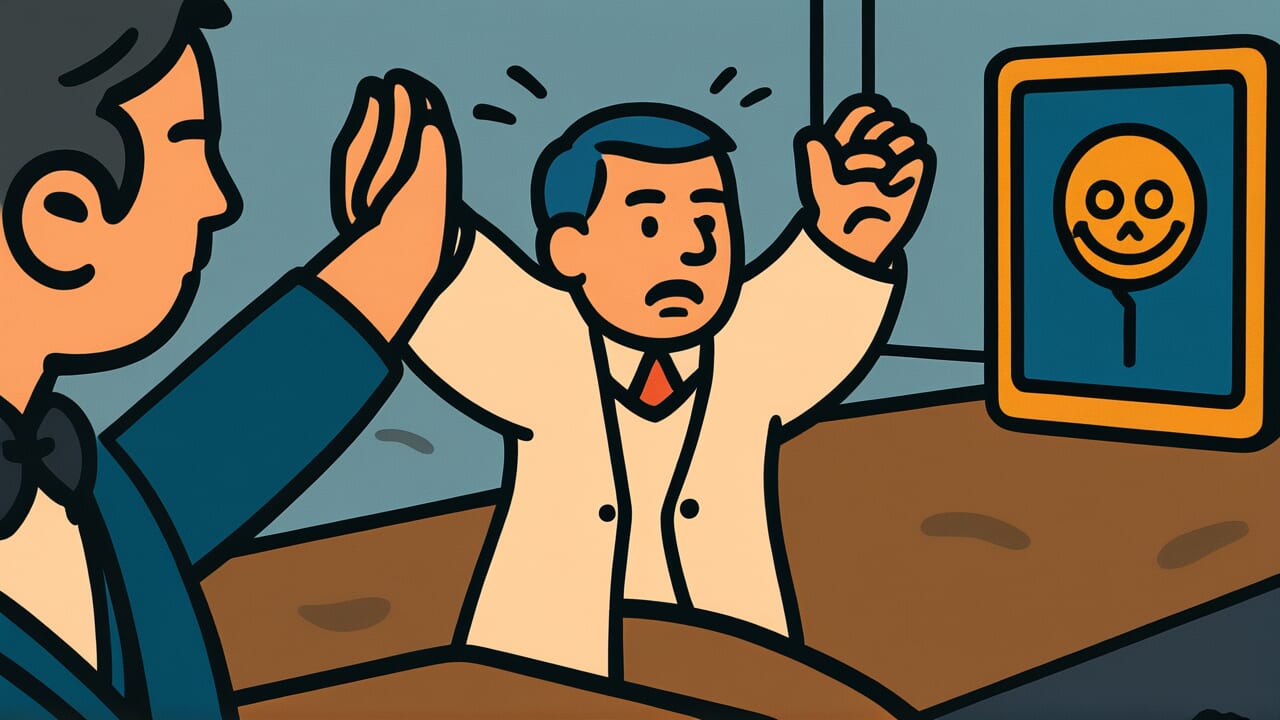How to Read “Those with harmful intentions face obstacles”
Gaishin aru mono bōgai ari
Meaning of “Those with harmful intentions face obstacles”
“Those with harmful intentions face obstacles” means that people who harbor malice and try to harm others will inevitably encounter barriers that block their schemes.
It expresses the teaching of karma—that evil intentions naturally bring their own consequences.
This proverb is used to warn people who try to trap others or act with malicious intent. Their actions will always be blocked in some way.
It also serves as a warning to those planning wrongdoing. Or it helps people find peace when witnessing injustice, believing that consequences will eventually come.
This teaching holds true even today. People who act with harmful intentions lose the trust of those around them.
Their plans get exposed in unexpected ways. They suffer from guilt and conscience. They face obstacles in various forms.
This proverb teaches us the importance of living honestly and sincerely.
Origin and Etymology
There are no clear records about the exact origin of this proverb. However, we can examine its formation through its structure and philosophical background.
The word “gaishin” (harmful intention) has been used as a Buddhist term referring to malice or evil thoughts toward others.
Buddhism teaches that afflictions and malice arising in the human heart eventually bring suffering to oneself. This is the teaching of karma.
“Those with harmful intentions face obstacles” is deeply connected to this Buddhist concept of cause and effect.
Ancient Chinese philosophy also contains many ideas that wrongdoers will inevitably face consequences.
Many Japanese proverbs originated from continental thought that came to Japan and merged with Japanese culture.
Looking at the structure of the phrase, “those with harmful intentions” and “face obstacles” are arranged like a couplet.
This concise, contrasting expression clearly shows cause and effect. It creates a memorable form as a teaching.
It powerfully conveys the universal truth that those with malice will inevitably encounter obstacles, all in just a few words.
Usage Examples
- He tried to advance his career through dishonest means, but those with harmful intentions face obstacles—he was exposed by a whistleblower
- The person who schemed to bring down their rival failed because of their own mistake—truly, those with harmful intentions face obstacles
Universal Wisdom
Why has “Those with harmful intentions face obstacles” been passed down through generations? Because it touches on a deep truth about human society.
The reason people with malice fail is not mere coincidence. Malice clouds judgment.
People consumed by thoughts of harming others lose their composure. They become blind to their surroundings.
The tension and anxiety of trying to hide wrongdoing creates unexpected mistakes. Furthermore, people who act with malice lose the trust of those around them and cannot gain cooperation.
Humans also have a mysterious intuition. When someone harbors malice, it gets transmitted to others as an unspoken sense of unease.
As a result, people become wary without realizing it, and plans get blocked.
What this proverb shows might be something like a universal principle. Malice contains within itself the seeds of its own destruction.
Conversely, living sincerely is the most reliable path to success. Our ancestors saw this truth through long life experience.
That’s why this teaching still resonates in our hearts today.
When AI Hears This
An interesting chain reaction of cognition occurs in the brain of someone harboring harmful intentions.
Once the human brain thinks “someone might interfere with me,” it unconsciously begins collecting only information that supports that hypothesis. This is confirmation bias.
For example, they interpret someone’s casual glance as “being watched.” They perceive bad timing as “intentional interference.”
The brain works like a search engine, picking up only information that matches one’s beliefs from vast amounts of data.
What’s more troublesome is that this cognitive distortion changes behavior. People with harmful intentions become defensive.
They avoid cooperation with others or take preemptively aggressive attitudes.
According to the self-fulfilling prophecy proposed by psychologist Robert Merton, even baseless predictions can change reality through the actions of those who believe them.
Wary people create tension in their surroundings. They actually get distanced or opposed by others.
In other words, the belief of “being obstructed” becomes the cause that attracts real obstruction.
The frightening aspect of this phenomenon is that the person perceives the causality in reverse.
Feeling “I was obstructed after all” further reinforces confirmation bias, completing a negative loop.
Harmful intention—this invisible hostility—becomes a device that manufactures real obstacles through the brain’s cognitive system.
Lessons for Today
What this proverb teaches us today is that sincerity is the strongest strategy.
In our competitive modern society, we sometimes feel tempted to take shortcuts. Outsmarting others or using dishonest methods might seem profitable in the short term.
However, as this proverb shows, malice always comes back to haunt you.
What matters is having a long-term perspective. Acting honestly and sincerely builds trust from those around you—the most valuable asset of all.
That trust will support you in difficult times and bring you new opportunities.
On the other hand, what you gain through malice comes with constant anxiety about losing it. It never brings true peace of mind.
If you’re harboring bad feelings toward someone right now, take a moment to pause.
If you act controlled by those feelings, you’ll ultimately be the one who suffers. Instead, have the courage to let go of those feelings and choose the right path.
Living with a pure heart is what will most surely lead you to happiness.



Comments